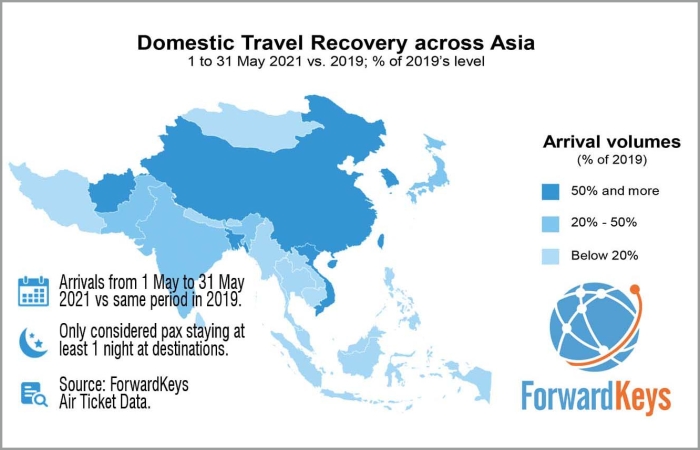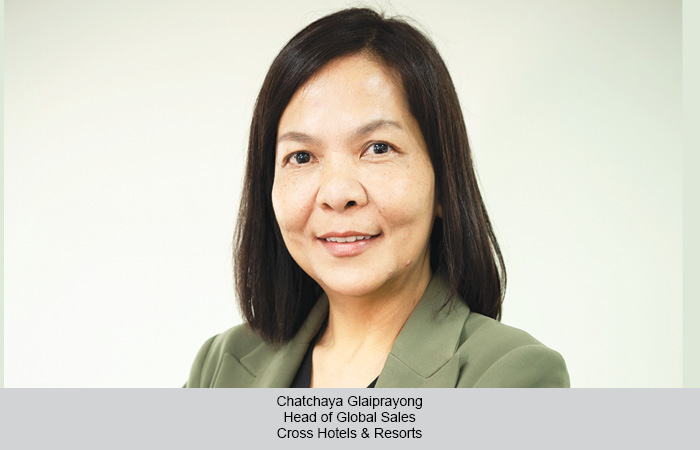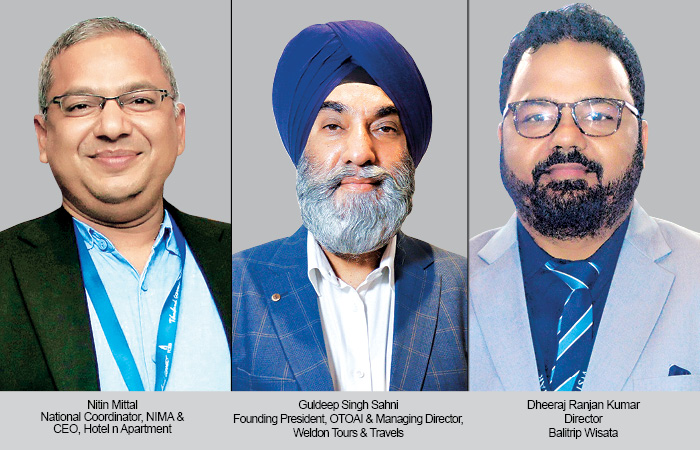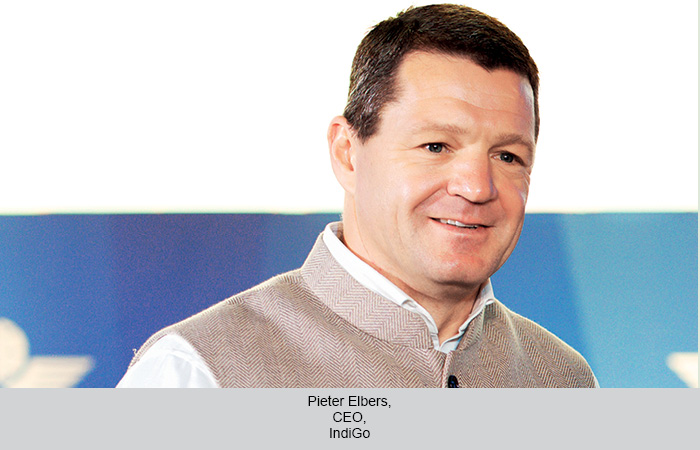A few risk-taking destinations in APAC are trying some new approaches to compensate for the collateral loss of international arrivals. ForwardKeys shares a few highlights to demonstrate that there are still a few things countries can do to keep a steady trickle of tourism revenues until the promised full recovery in 2024.
Travel analytics firm ForwardKeys says, ‘The Asia Pacific region has gone from being a top dog in the travel and tourism sector to being put in the doghouse due to the handling of the pandemic, see-saw COVID-19 case numbers and at times, complacency.’ But, this is not the end! It advocates the wise use of this time to think, re-invest energies and let Big Data be a guiding force through this COVID-19 fog. Here are five things, according to ForwardKeys, that destinations can do to keep steady in these turbulent times:
1 Seize the new opportunities in the domestic market: Investing in a sound domestic tourism plan with healthy airline promotions and tour operators in sync has its merits.China reached pre-pandemic domestic arrival levels as early as September 2020, even with the pandemic in flagrant, thanks to teaming up its national public holidays with airline deals for couples (two for one offers) and the introduction of tax-free perks for shopping holidays to Hainan.
2 Re-think destination strategies & flight connectivity: Take this period as a time for reinvention as the data is pointing out that this is a glaringly obvious thing to do. Phuket, for instance, saw the strength of the Israel market this summer. For the first time, Israel, a relative newcomer, tied with the UK as the top source for Phuket in July-September, with Germany as the second biggest source. El Al started operating a daily direct flight from Tel Aviv to Phuket on July 1. This shows the industry needs to look at other factors, beyond travel restrictions, that will shape travel decisions and change traditional market sources and segments. These factors include airline connectivity, currency and safety perceptions.
3 Set up ‘safe’ travel bubbles or sandboxes: Travel bubbles, when announced early, with uncomplicated travel checks and clear safety protocols can work. An APAC initiative that merits praise is the recent introduction by the Thailand Tourism Authority of the Phuket Sandbox.
4 Make early border announcements: One noticeable trend in Europe that is replicating across Asia is clear and early announcement regarding the re-opening of borders and the travel conditions applicable. Well in advance of the popular summer season in Europe, Croatia and Greece announced in Q1 that they will be welcoming vaccinated international travellers from the US and suddenly, it was one of their top source markets.
5 Invent new promotions & activities: Last-minute bookings have become part of the new normal. This trend is a tricky one for hotels struggling with occupancy rates – but if you know what origin cities your key source markets are, you can improve your marketing spend and enticing offers to suit the relevant audience. For instance, Macau used to be a one-night or two-day experience for Chinese mainlanders as they paired their holiday with a few days in Hong Kong.
 TravTalk India Online Magazine
TravTalk India Online Magazine








